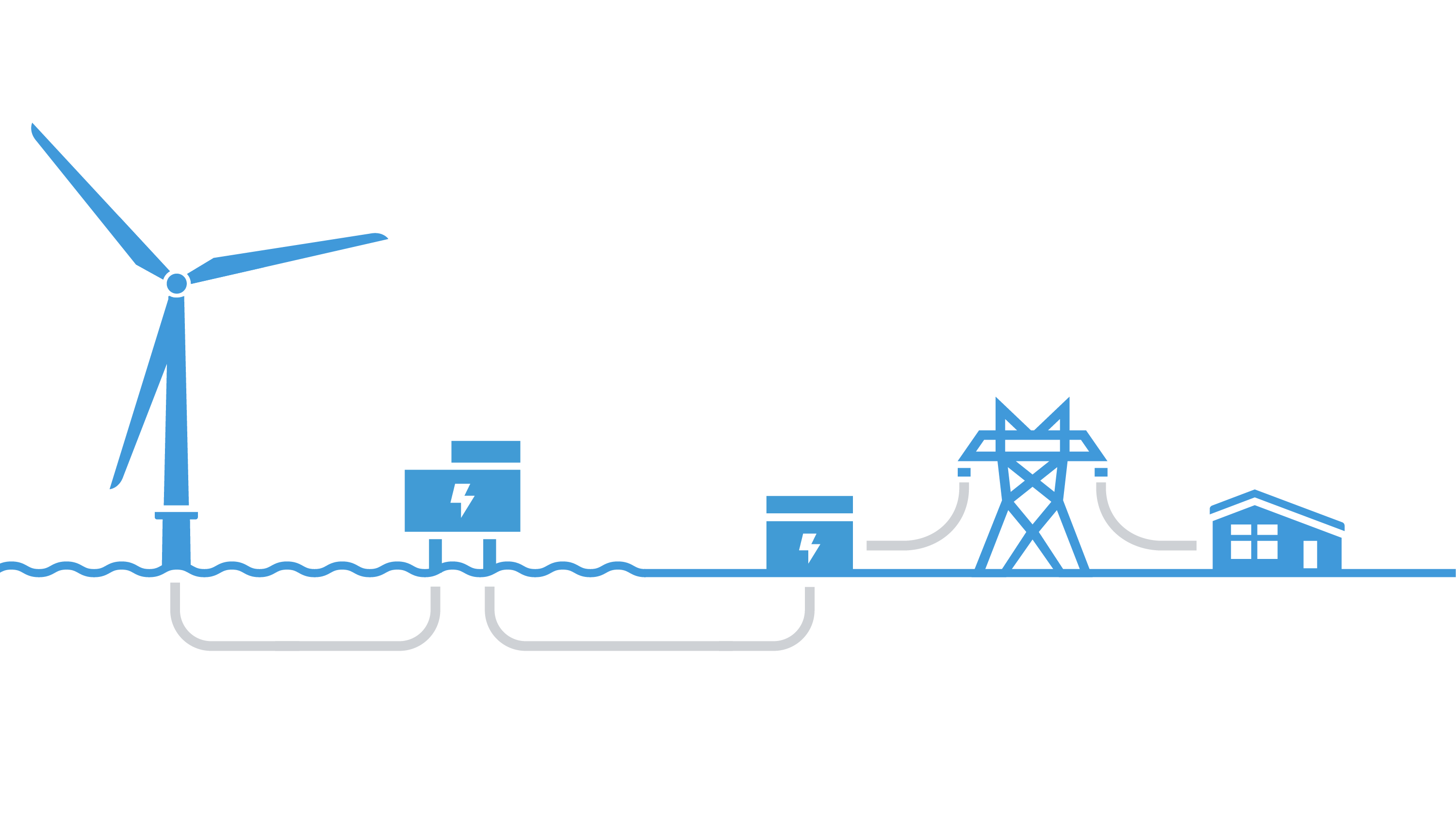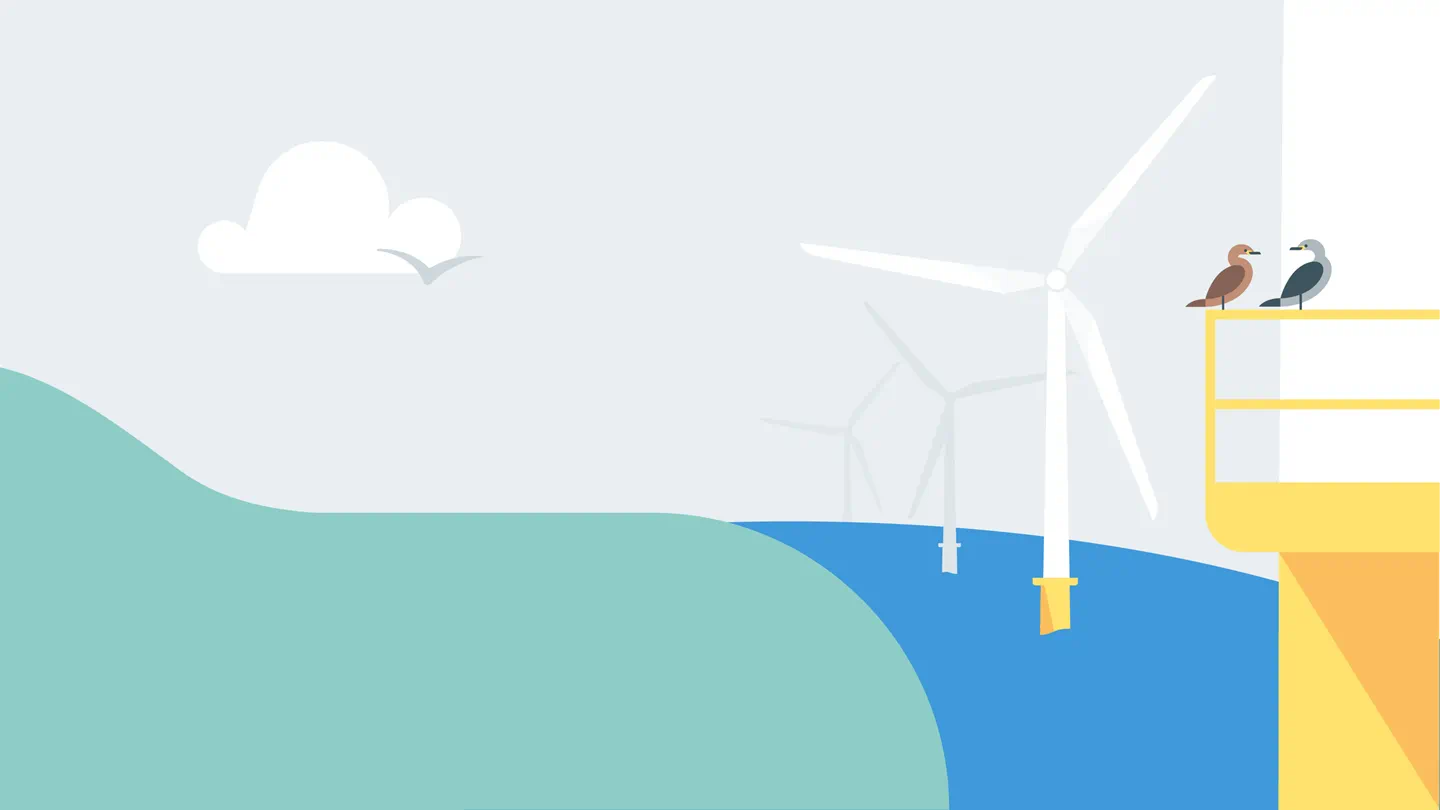Making landfall
Landfall refers to the point at which the cables carrying power from an offshore wind farm reach the shore. This is where the offshore and onshore infrastructure is connected – an important step in bringing renewable wind energy into the power grid.
It takes about two years to construct the four stages of landfall outlined on this page.
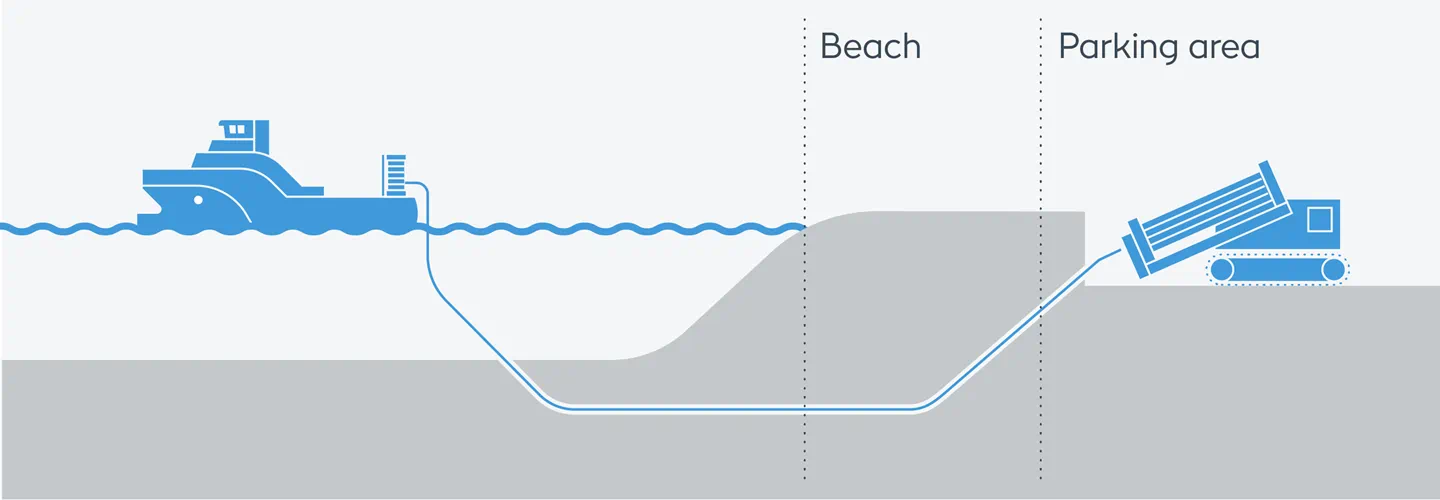
The first stage of making landfall is for a cable to run from the seafloor to a location a short distance inland. To put this cable in place, a hole is drilled using a technique called horizontal directional drilling.
The hole starts in a small pit behind the dunes or a beach, and is then bored using a drill rig machine. Drilling can be measured and controlled precisely, keeping it well below the surface, until the drill head emerges from the seabed half a mile to a mile out to sea.
The drill head is then pulled back through the hole, bringing with it a pipe from a cable installation vessel. After this, a cable can be fed through the pipe, establishing a safe path for the wind energy to be brought ashore.
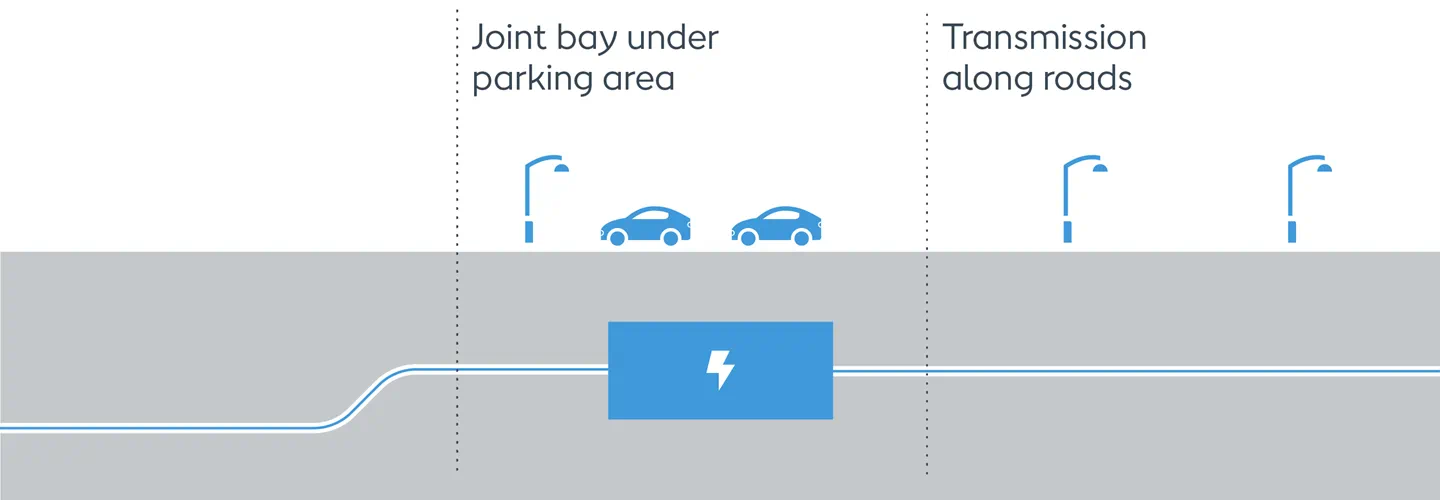
The site of the drilling pit becomes the home of the transition joint bay. This is an underground concrete box, where the cable from under the beach joins a cable leading to the onshore substation further inland.
The transition joint bay is usually constructed in a parking lot, both for ease of access, and so as not to cause any damage to the natural environment.
Since it is housed underground, once constructed, the transition joint bay is basically invisible, except for some manhole covers in case there is need for future access. The location is always restored to its original condition or better than it was found in, so any disruption during construction is only temporary.
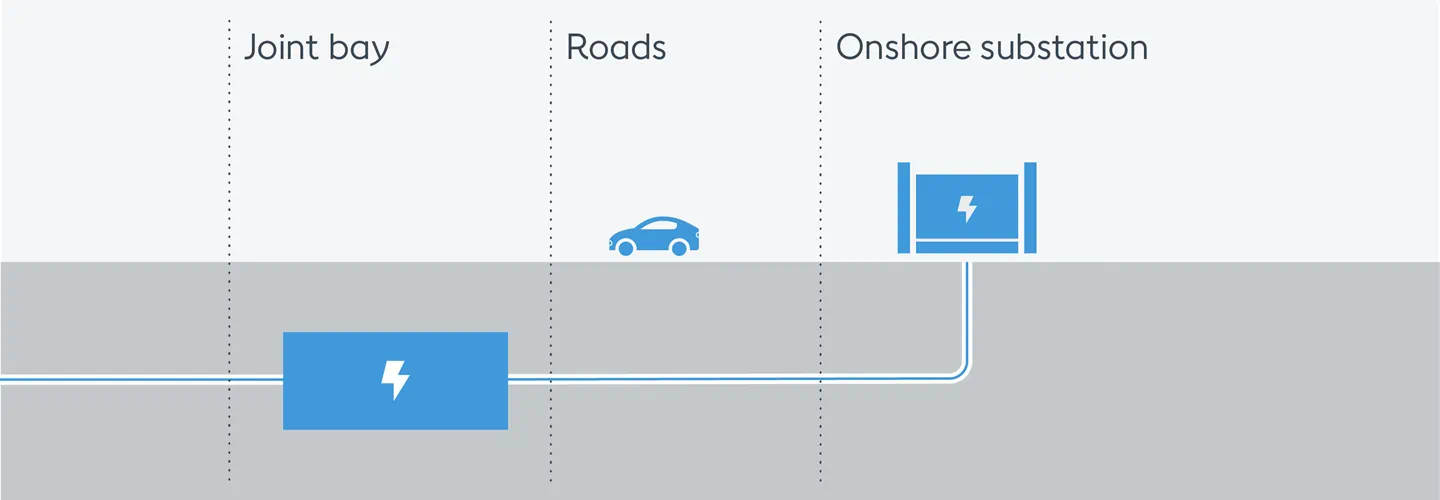
From the transition joint bay, cables run underground to a substation. Depending on the location of the substation, the underground transmission line could be several miles long. Like other utility pipes and cables, it tends to run lengthways underneath a road.
This means digging a trench where the cable will be laid, which will then be covered again, and the road returned to its original condition or better. As with the transition joint bay, the only visible evidence of the underground transition lines after construction is manhole covers.
Construction is coordinated with local authorities to limit disruption to traffic, residents and businesses, keeping as much of the road open as possible, as well as access to properties. Precautions are also taken to minimize dust, mud, debris and site traffic.
Additionally, onshore construction is halted during local tourism seasons to avoid impacting the regional economy.

The final stage in getting renewable power from the offshore wind farm to the distribution grid is the substation. This is where the physical connection is located, and where the current is converted to the right voltage and frequency to be fed into the grid.
The substation is the only above-ground piece of new infrastructure related to landfall, so its location must be chosen very carefully to minimize any impact on nature, and those who own and use the land. To help make this decision, extensive environmental, technical and feasibility surveys are completed, and ongoing consultations with landowners, statutory and regulatory bodies and local communities occurs. Additional surveys are completed after construction to identify and limit any noise impacts.
Substations can vary significantly in type, size and layout. Typically, a substation site will occupy an area of six to nine acres, consisting of between two and eight buildings, up to 50 feet in height. The site includes associated roads, fences and landscaping, and may include an open yard as well as buildings.
